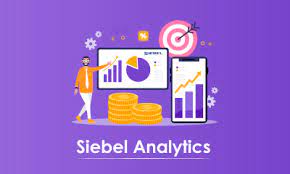
SIEBEL ANALYTICS
SIEBEL ANALYTICS: The Siebel Business Analytics product line has been renamed to Oracle Business Intelligence. Siebel Analytics Platform has been renamed to Oracle Business Intelligence Enterprise Edition (EE) and Siebel Business Analytics Applications have been renamed to Oracle Business Intelligence Applications. Along with this name change, functionality has been added to the new Oracle Business Intelligence versions that Siebel Analytics Application customers do not have
Training Objectives of SIEBEL Analytics:
The main Objective of this Course is to enable Students to perform the tasks required to successfully complete a Siebel Business Analytics deployment. Students can able to build a simple Siebel Intelligence Dashboard starting with basic requests created in Siebel Answers. Candidates can also able to add more complexity to the Dashboard as the course progresses, including pivot tables, prompts, charts, embedded content, and navigation links etc.
Target Students / Prerequisites:
Students must have Technical Background and Having Logical Programming Skills and knowledge on Database Concepts.
Foundations
Introducing Siebel Applications
Implementing Siebel Applications
Using the Siebel Client
Working with Data in the User Interface
Architecture and Installation
Exploring the Siebel Architecture
How Clients Access Seibel Data
Installing Siebel software
Introducing Server Administration
Server configuration and Management
Security
Securing Siebel Implementations
Controlling Access to views
Controlling Access to Customer Data
Creating the Company Structure
Controlling Access to Master Data
Authenticating Users
Exploring Siebel Applications
Understanding object Definitions behind a Siebel Applications
Understanding Siebel Tools to Examine Object Definitions
Understanding the Siebel Data Model
Understanding Business Components
Understanding Party Business Components
Understanding Business Objects
Configuration
The Configuration Process
Managing Object Definitions
Editing and Compiling Object Definitions
Understanding the Physical User Interface
Configuring Applets
Configuring Applications, Screens, and Views
Configuring Drilldowns
Configuring Business Components and Fields
Creating business Components and Fields
Configuring Pick Lists
Configuring Multi-Value groups
Extending the Seibel Database
Exploring Integration Strategies
Enterprise Integration Manager
Exploring Integration Strategies
Introducing Enterprise Integration Manager
Data Mapping
Invoking Enterprise Integration Manager
Enterprise Integration Manager Consideration
Workflow manager
Understanding Siebel Event models
Using Siebel State Model
Introducing Siebel Workflow
Deploying Workflow Processes
Invoking Workflow Processes
Understanding Interactive and Long-Running Flows
Assignments manager
Introducing the Assignment Manager
Creating Sales Assignment Rules
Assignment Manager Configuration
Deploying Assignment Manager
Deployment
Performance Considerations
Migrating from Development to Test
Using Siebel Remote to Support Mobile clients
Administering Siebel Remote
Actuate Reports
Introduction about reports Architecture of report server
Simple reports
Master-child reports
Parameterized reports
e-Script
Browser script
Server script
Applet-level
BC level
Application and Business services level
eRoadmap methodology
Definition stage
Discovery stage
Design stage
Configure stage
Implement
Deploy stage
Introduction to Siebel EAI
Introduction to Siebel EAI
Introduction to Siebel Testing
Introduction to Siebel Testing
Career Guidance
Career Guidance
Enroll For Course Now